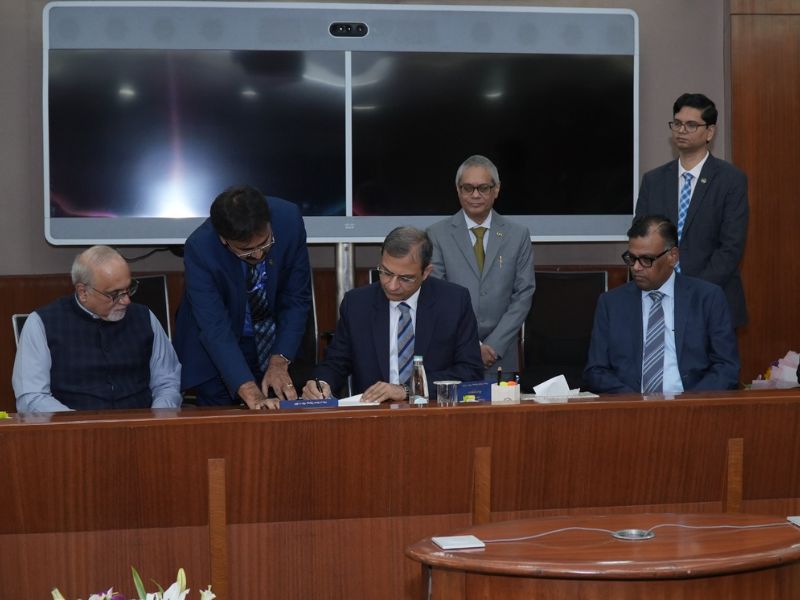.png)
Richard is an independent financial journalist who tracks financial markets and macroeconomic developments
February 7, 2025 at 5:20 AM IST
Reserve Bank of India Governor Sanjay Malhotra, in his first Monetary Policy Committee meeting as its chair, announced a 25-basis-point cut in the repo rate to 6.25% while maintaining the ‘neutral’ stance. The decision marks a subtle shift from his predecessor, Shaktikanta Das, who was steadfastly focused on anchoring inflation at 4% before considering any easing.
Malhotra, however, signalled a more flexible approach, acknowledging that inflation has moderated and is expected to ease further in the coming year, supported by a favourable food price outlook and the lagged impact of past policy actions.
While growth is expected to recover from the seven-quarter low of 5.4% in July-September 2024, it remains well below last year’s levels. These dynamics, Malhotra argued, provided policy space to support growth while staying committed to aligning inflation with the 4% target over the medium term.
The RBI’s growth projection for 2025-2026 stands at 6.7%, aligning with the Economic Survey’s estimate of 6.3-6.8%. Inflation is expected to moderate to 4.2% in the next year from 4.8% in the current year. December’s retail inflation eased to 5.22%, down from 5.48% in November and a 14-month high of 6.21% in October, keeping it within the central bank’s 2-6% tolerance band.
The RBI lowered its GDP forecast for the first quarter of 2025-26 to 6.7% from 6.9% and cut the September quarter projection to 7.0% from 7.3%. Growth estimates for the October-December and January-March quarters remain at 6.5% each.
Malhotra highlighted that rural demand remains strong while urban spending trends are mixed. He pointed to improved employment conditions, tax relief from the Union Budget, and moderating inflation as factors supporting household consumption. Government spending is expected to stay measured, while business sentiment and policy support should bolster fixed investments. Services exports continue to provide momentum, he said.
The MPC retained its CPI inflation forecast for 2025-26 at 4.2%, with the first quarter estimate unchanged at 4.5%. The September quarter projection remains at 4.0%, while inflation for October-December and January-March is expected at 3.8% and 4.2%, respectively.
Food inflation is likely to moderate, barring unexpected supply shocks. Malhotra said a strong kharif harvest, easing vegetable prices, and favourable rabi crop conditions should support disinflation.
The committee defended the rate cut, citing sustained disinflation and improving growth. However, it maintained a ‘neutral’ stance due to risks from global market volatility, trade policy uncertainties, and adverse weather conditions that could disrupt inflation and growth. Malhotra underscored that this stance gives the committee flexibility to respond to changing macroeconomic conditions without committing to a fixed policy path.
While Malhotra’s first policy move aligns with past governors, his emphasis on flexibility over a strict inflation-targeting approach suggests a shift in the RBI’s policy outlook.
Malhotra also addressed speculation that RBI had pegged the rupee to the dollar. He clarified that interventions in the forex market aim to curb excessive volatility rather than maintain a fixed exchange rate. The rupee, he stressed, remains market-driven.
New Governor
Malhotra reaffirmed the effectiveness of the flexible inflation targeting framework, introduced in 2016 and reviewed in 2021, as a critical tool for navigating economic challenges, including the pandemic. He emphasised that the RBI would continue using the framework’s inherent flexibility to balance growth and inflation dynamics.
Signalling a shift, Malhotra hinted that the RBI may adopt a more flexible approach instead of strictly adhering to the mid-point of the inflation tolerance band, which remains the formal target. He also indicated that the central bank would refine the framework further by incorporating new data sets for a more comprehensive assessment of inflation trends.
The debate over food inflation’s weight in monetary policy resurfaced, with some officials questioning whether it skews policy decisions. Some finance ministry officials, including Chief Economic Adviser V. Anantha Nageswaran, have previously argued that the high weightage of food prices in the inflation basket could lead to policy misjudgments. Nageswaran had suggested excluding food prices from the inflation target, a stance that could influence future policy discussions.
Malhotra said that the RBI would strengthen its forecasting models to improve accuracy in macroeconomic projections, ensuring data-driven policy decisions.
On the regulatory front, Malhotra acknowledged discussions on financial sector reforms, including the liquidity coverage ratio, the expected credit loss framework for bank provisioning, and prudential norms for ongoing projects. He assured that the RBI would refine these regulations to strengthen financial stability while balancing efficiency and compliance.
Malhotra said financial stability and consumer protection remain top priorities, though he recognised the trade-offs involved. He noted that all regulations carry costs and benefits, and the RBI aims to strike a balance that safeguards stability without stifling efficiency.
Malhotra underscored that policymaking would remain consultative, with industry feedback shaping major regulatory decisions. He also assured that any significant policy shifts would be phased in gradually to minimise disruptions, ensuring a smooth transition for financial institutions and markets.
This article was updated at 1205 IST




